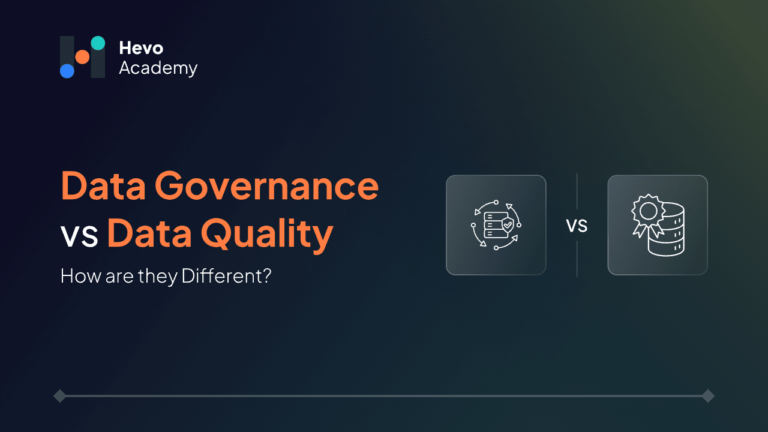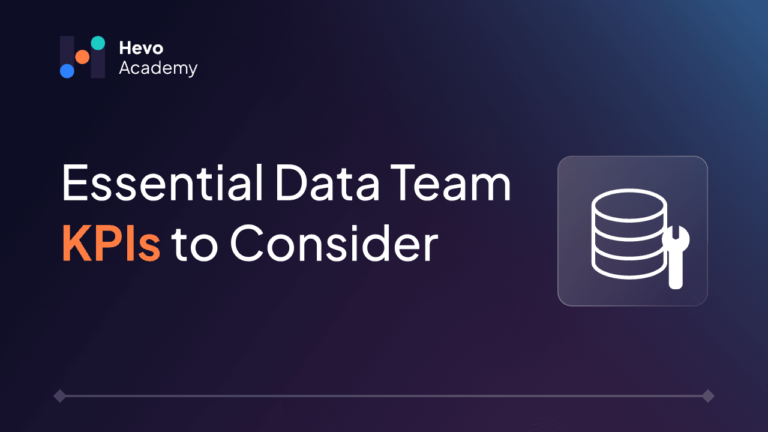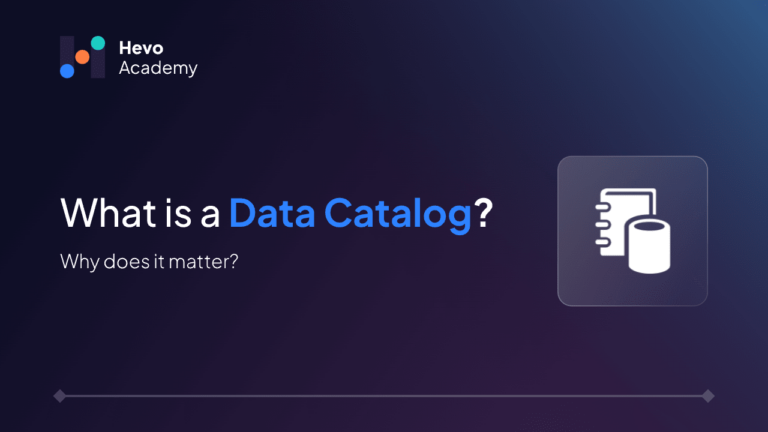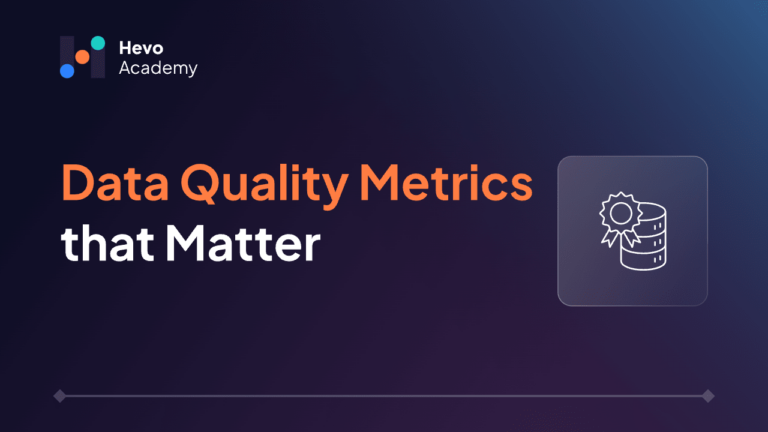As the dependency on data for making informed decisions increases, the terms data quality and data governance become increasingly essential. While these two terms are frequently used together, they relate to different aspects of data management.
Table of Contents
In this blog, we’ll dive into the differences between Data Governance vs Data Quality, explore how they complement each other, and explain why both are essential for any organization looking to maximize the value of its data. So let’s get started!
Data Quality Overview
Data Quality is the condition of a dataset, which determines its suitability for use. It describes data accuracy, completeness, consistency, and other attributes. The organization needs high-quality data that can be trusted in making critical decisions. An organization will only be data-driven if it has high-quality data; that means one should not rely on its data. An organization must trust its data to be able to use it to drive significant business decisions, which inevitably causes inefficiency, lost opportunities, and financial loss.
Let’s understand this better with an example. Data quality in a customer database means that the database is spelled correctly, fully captured, and has consistent customer names, addresses, and contact information; records are kept up-to-date. On the contrary, poor data quality leads to incorrect insight, poor business decisions, or even compliance risks.
To understand what problems poor data quality can bring, check out our blog on the Risks Of Poor Data Quality.
Take control of your data with Hevo’s no-code platform, designed to enhance data quality and governance. Choose Hevo to:
- Integrate data from 150+ sources(60+ free sources).
- Improve your data quality with features like drag-and-drop and custom Python scripts.
- Use the same account so the entire team can access the data easily.
Join customers like Deliverr to ensure your data is accurate, consistent, and compliant across all sources with automated validation checks and real-time monitoring.
Get Started with Hevo for FreeDimensions of Data Quality
Data quality has six dimensions that businesses can use to analyze and assess against predefined criteria to determine the level of data quality.
- Accuracy: Checks if the data values are accurate depending on the agreed-upon source of truth.
- Completeness: The number of usable or full data points in a typical data sample.
- Timeliness: Checks if data is ready within a specific timeframe.
- Consistency: Compares data records from two distinct databases.
- Reliability: Checks how much data meets the appropriate format for any business standard.
- Uniqueness: Tracks the amount of duplicate data in a dataset.
Why is Data Quality Important?
It is important to maintain good data quality because of the following reasons:
- Informed decision-making: Wrong/ inconsistent data can lead to wrong analysis and negatively affect an organization’s decision-making process.
- Operational efficiency: Data quality directly influences operational efficiency by providing all departments with accurate information for everyday tasks.
- Revenue opportunities: Data quality directly affects an organization’s revenue opportunities by enabling more effective marketing strategies based on precise customer segmentation and targeting.
To read more about Data Quality, check out our blog on Data Quality Metrics.
Data Governance Overview
On the other hand, data governance is the framework that lays out how data management, usage, and protection occur. This includes a broad set of processes, roles, policies, standards, and metrics established to ensure that information is utilized effectively and efficiently to support an organization in achieving its goals.
A Data Governance policy might dictate how customer data is collected, who has access to it, and how long it is retained. For example, implementing encryption and access controls on sensitive datasets. Therefore, data governance is about managing all information assets of an organization, not just data but also documents, applications, networks, configurations, and metadata.
Key Components of Data Governance
Data Governance has five key components, and they are as follows:
- Policies and procedures: Guidelines and rules that define how data should be used and maintained.
- Data stewards: Individuals or teams responsible for ensuring data quality and enforcing data governance policies within specific departments or domains.
- Data quality: This includes ensuring data quality, accuracy, and completeness.
- Data lineage: Tracking data flow through its entire lifecycle- starting from creation and storage to usage and archiving.
- Data security: This involves protecting data from unauthorized access, breaches, and theft.
Why is it Important to Implement Data Governance?
Implementing data governance is crucial because of various reasons, such as:
- Data Quality: It ensures good data quality for successful analysis and implementation.
- Regulatory Compliance: It helps companies comply with increasing data privacy and protection laws, such as GDPR and the California Consumer Privacy Act (CCPA).
- Facilitates Better Decision-Making: High-quality, well-governed data enables organizations to derive accurate insights, leading to better strategic decisions.
- Lower data management costs: It streamlines data management, reducing its required cost.
Data Governance vs Data Quality
| Aspect | Data Quality | Data Governance |
| Objective | To enable reliable decision-making based on accurate data by ensuring curacy, completeness, reliability, and consistency. | To manage data as an asset and ensure compliance with regulations, including the overall management, control, and strategic utilization of data assets within an organization. |
| Goal | Ensures that the data is accurate, reliable, and suitable for use. | Ensures that data management practices align with organizational policies, legal requirements, and ethical standards. |
| Scope | Focuses on the attributes of the data itself. | It encompasses the entire data lifecycle and includes a comprehensive strategy and set of methods for managing data as a valued resource. |
| Processes Involved | Data profiling, cleansing, validation, enrichment, and monitoring. | Data policy creation, stewardship, classification, access control, compliance auditing, and lifecycle management. |
| Handled by | Managed by data analysts and IT teams focusing on ensuring the data meets quality standards. | Managed by data governance teams, data stewards, compliance officers, and executives who establish and enforce data policies and frameworks. |
| Impact of failure | Leads to misguided decisions, inefficiencies, reduced trust, and financial losses. | Leads to non-compliance with regulations, data breaches, legal penalties, loss of stakeholder trust, and overall data mismanagement. |
Data Quality & Governance: A Must-Have Pair
While data quality and data governance relate to different aspects of data management, they are both sides of the same coin. What we mean is that they are not isolated practices; they are deeply intertwined. A robust Data Governance framework provides the structure and oversight needed to enforce Data Quality standards. It is non-negotiable to have both of them because of various reasons:
- Better Decision Making: Good data managed by effective governance leads to reliable insight for business.
- Better Compliance: Ensuring that data is subjected to quality and governance standards reduces the risk of regulatory breaches.
- Operational Efficiency: Smooth data handling processes reduce duplication and errors, saving resources and time.
- Trustworthiness: If the data from both internal and external stakeholders were better governed and of higher quality, there would be much more trust in it.
Organizations leveraging agile data governance often find that it enhances data quality by enabling a responsive framework that adapts to evolving data standards.
Challenges in Integrating Data Quality and Data Governance
Though integrating data quality and governance has various benefits, some challenges are associated with it, too. Common challenges may include:
- Data Silos: The different data systems make it difficult to have the same Data Quality and governance across an organization.
- Lack of ownership: A lack of clear roles and responsibilities may hinder the efforts of Data Quality and Governance.
- Resistance to Change: Workers may resist new policies or processes, which, at times, are perceived as involving more work.
Data Quality and Data Governance with Hevo
To overcome these challenges, businesses need a tool that can help them consolidate their data from various data silos and transform it into a usable format. This is where Hevo comes in. Hevo is a simple, reliable, no-code platform that fulfills your data migration needs in just a few clicks. Hevo provides:
- Ease of Use and Integration: Hevo’s user-friendly interface and seamless integration with 150+ data sources offer a smoother experience, helping you to consolidate our data silos into one single destination.
- Flexibility and Transformations: Hevo provides greater flexibility and features, such as drag-and-drop and Python scripts, to increase your data quality and make it usable for business analysis.
- Competitive and Transparent Pricing: Hevo offers clear, flat pricing tiers that simplify cost management.
- Inclusive Customer Support: Hevo provides strong, accessible support across all tiers, ensuring all businesses receive the needed assistance.
Conclusion
To summarize, Data Quality and Data Governance are indispensable in data management. However, they address different subjects; together, they will improve data reliability and compliance, improving overall business performance. In fact, organizations that prioritize both will be better positioned to harness the full potential of their data assets and thrive in today’s data-driven landscape.
Try Hevo to improve the Quality of your data by transforming it and migrating it to your desired destination within minutes. Sign up for Hevo’s 14-day trial and get started for free!
Frequently Asked Questions
1. Is data quality a part of data governance?
Yes, data quality is a crucial component of data governance. It ensures that data is accurate, complete, and reliable, which is essential for effective governance.
2. What are the 5 levels of data governance?
Five levels of Data Governance are:
1. Data Governance Strategy: High-level policies and objectives.
2. Data Governance Framework: Structures, roles, and responsibilities.
3. Data Governance Processes: Procedures for managing data.
4. Data Quality Management: Ensuring data accuracy and consistency.
5. Data Governance Technology: Tools and systems supporting governance activities.
3. What is the difference between data quality and data steward?
Data Quality: Refers to the accuracy, completeness, and reliability of data.
Data Steward: An individual responsible for managing and overseeing data quality, ensuring data governance policies are followed.
4. Are data quality and data governance the same?
No, data quality and data governance are not the same. Data quality ensures that data is accurate, complete, and reliable for its intended use, while data governance defines the policies, roles, and responsibilities for managing and securing data across an organization.






